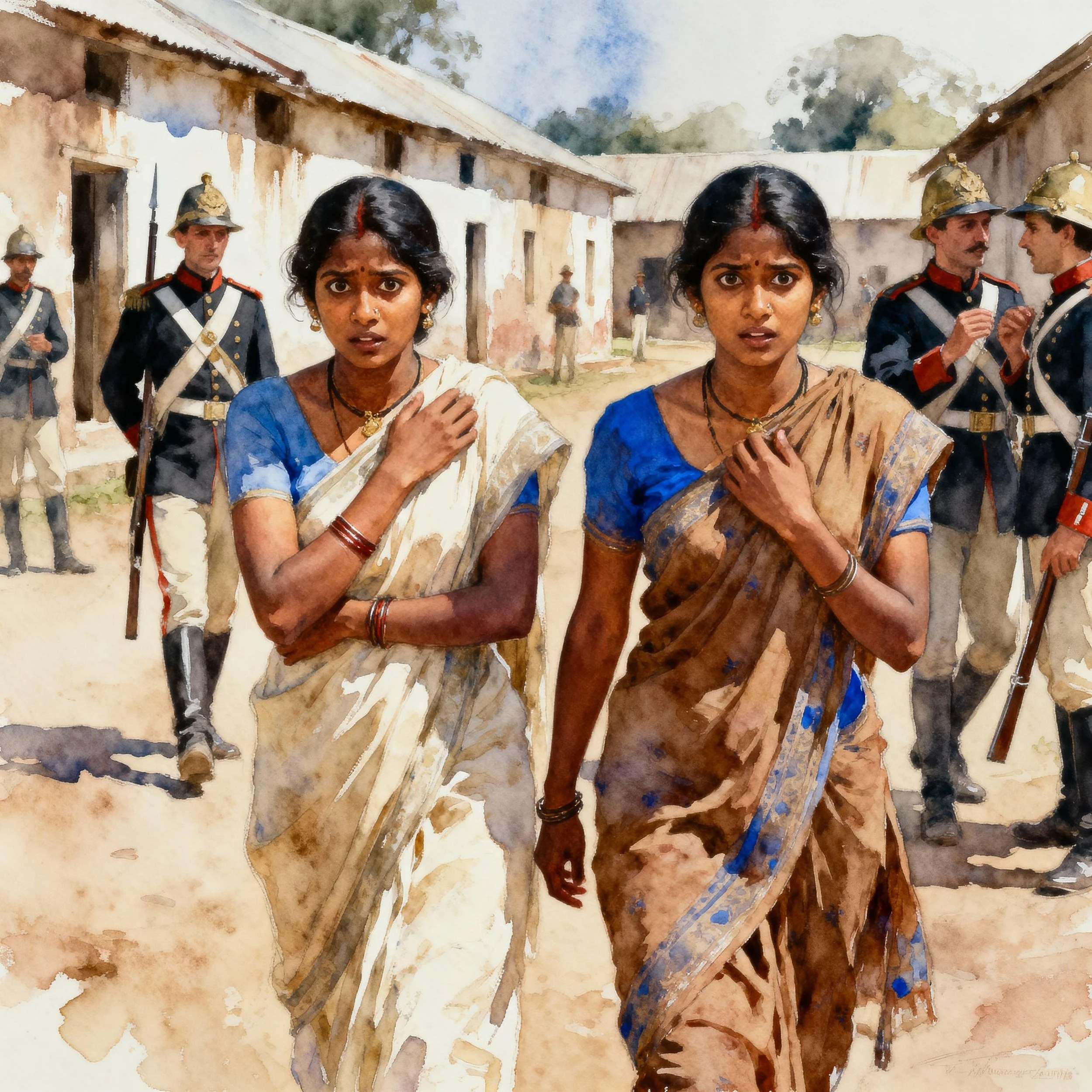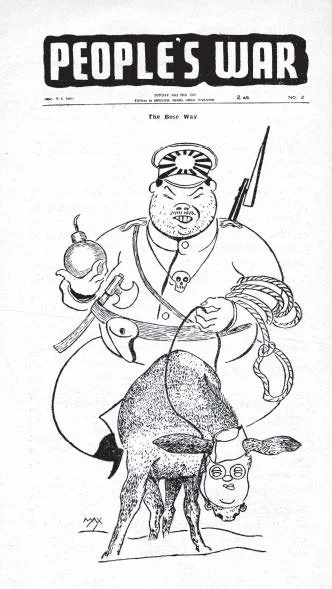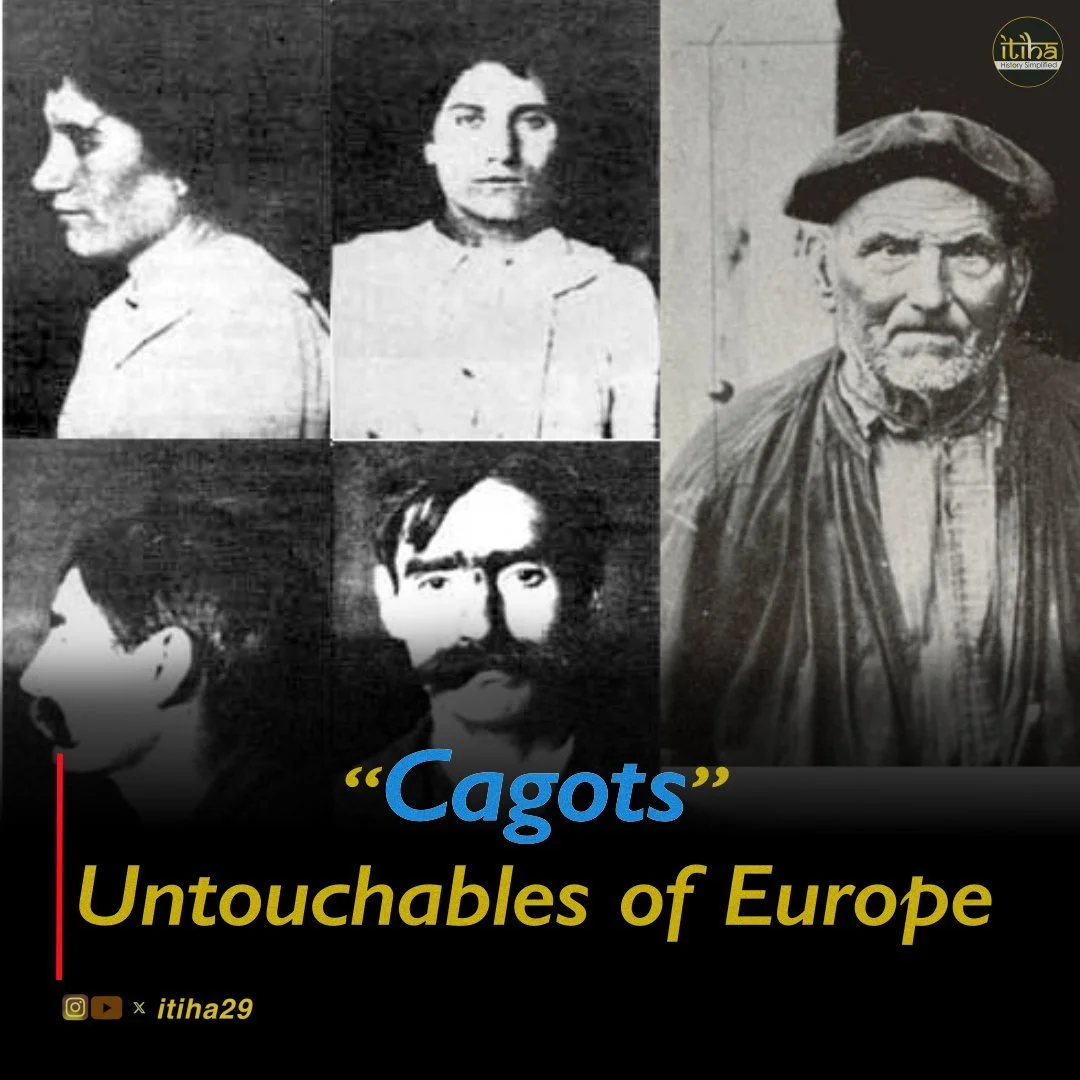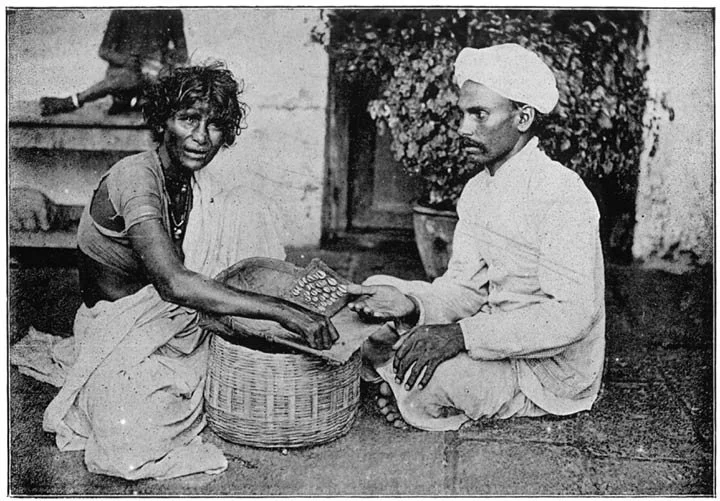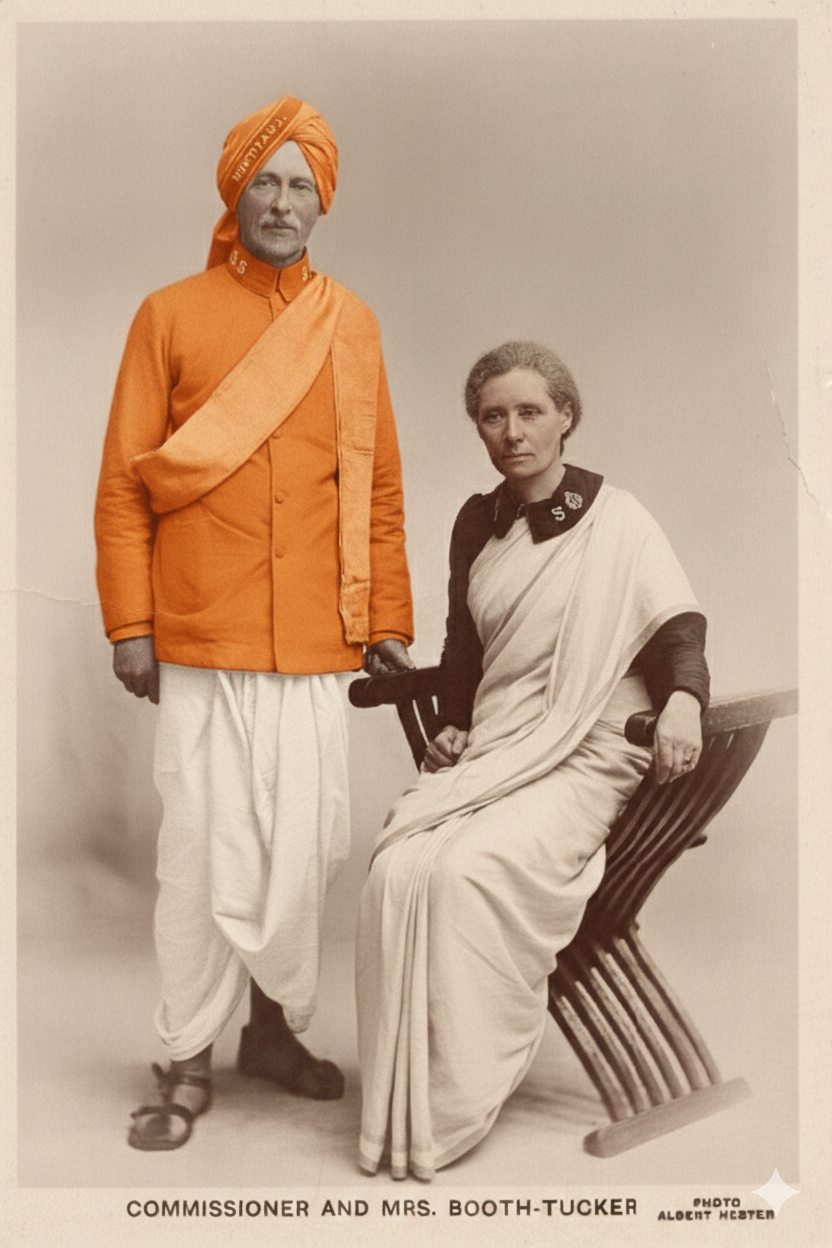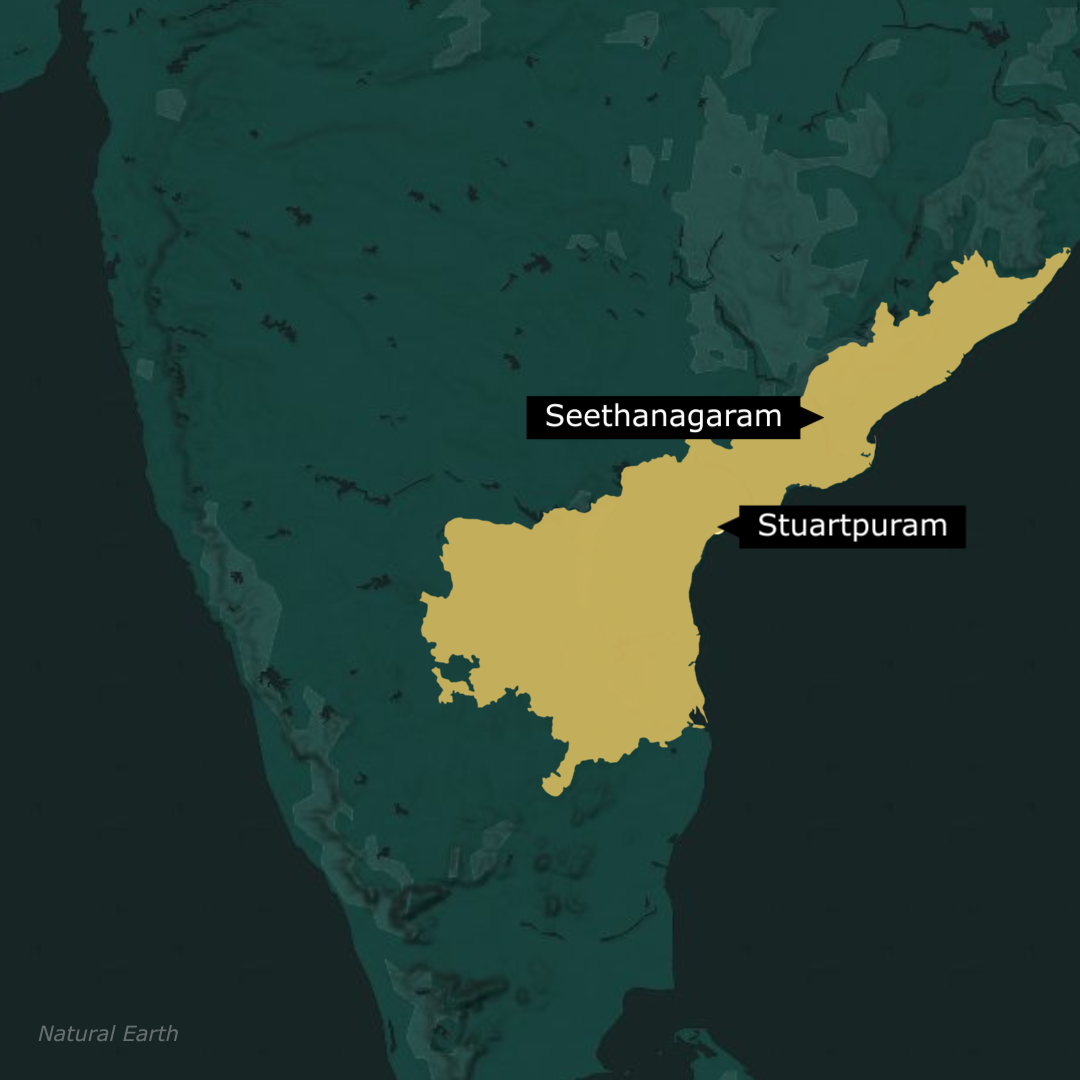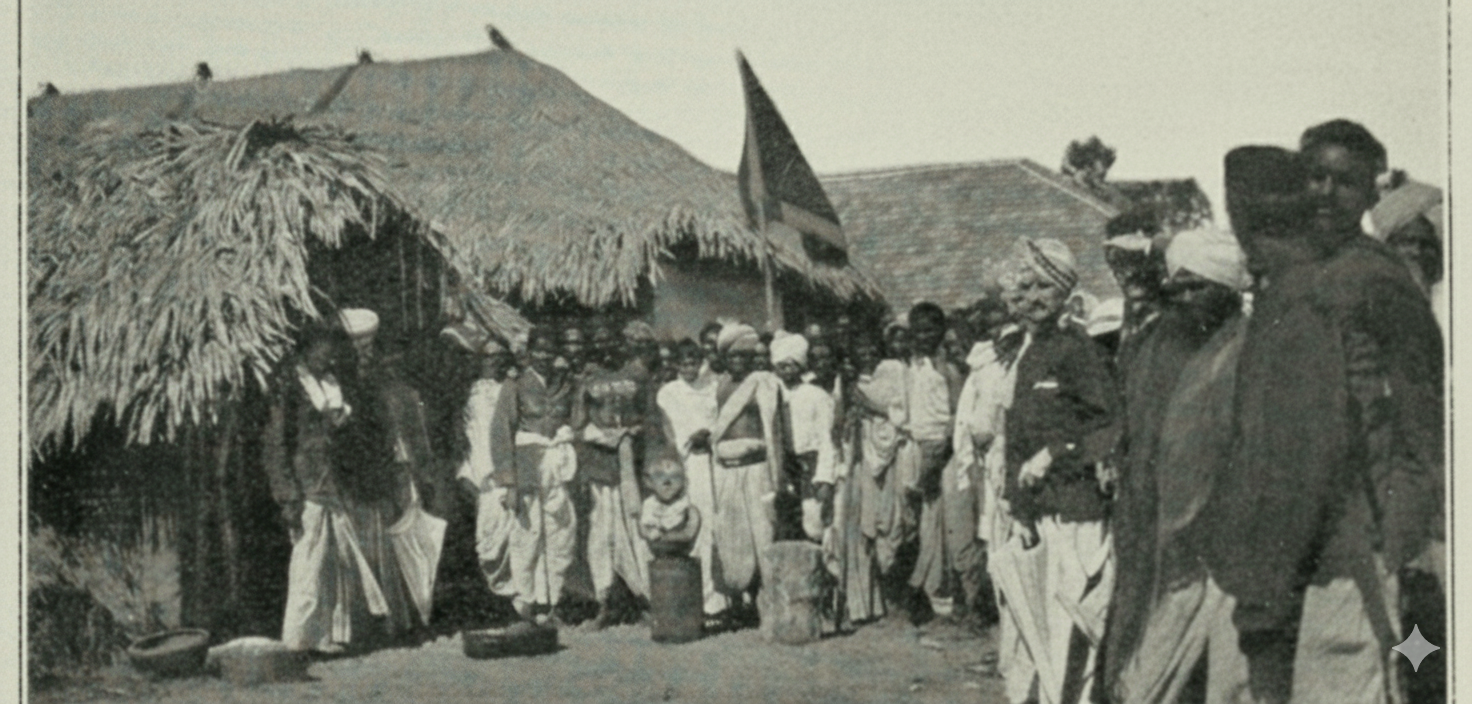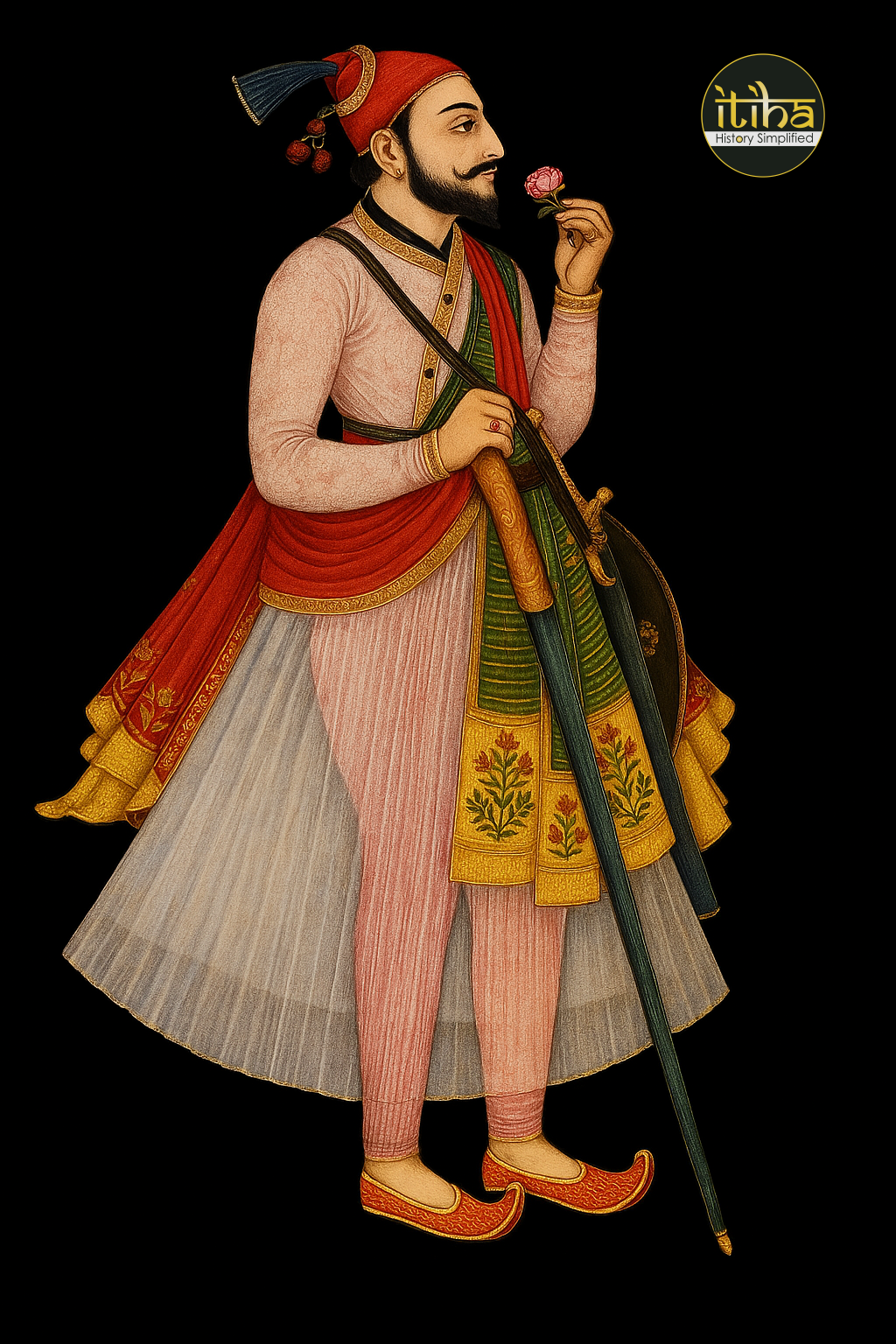How a "Prostitute Caste" Lie Justified Brothel Slavery in British India
In 1891, the British Army in India created a system of state-sponsored sexual slavery. They called it the Contagious Diseases Act, claiming they were simply regulating a "prostitute caste."
The horror? They were kidnapping and trafficking Indian women, some as young as 14, purely to ensure the health and morale of British soldiers. This system—enforced by debt, fines, and jail-like Lock Hospitals—was a direct consequence of colonial classism and military necessity.
The Unseen Crisis: Three Million People and a Toxic Lie
In the late 19th century, the British Army in India faced a crisis that threatened its operational effectiveness. By 1891, a staggering 25% of British soldiers were suffering from Sexually Transmitted Diseases (STDs).
The official solution—disguised under the Contagious Diseases Act—was a brutal, government-regulated system of prostitution operating within military cantonments. Officials conveniently blamed the crisis on the supposed "lax morals" of Indian women and the existence of a fabricated "prostitute caste."
However, when two brave British women arrived to investigate, they uncovered a horror: a colonial state-sponsored prostitution racket that enslaved, trafficked, and ruthlessly exploited young Indian women, some as young as 14, to ensure the health and morale of the common British soldier.
This is the story of how class, race, and Victorian hypocrisy led the British Raj to create a system of institutionalized sex slavery.
The British Soldier: From "Scum of the Earth" to Colonial Master
To understand why the colonial state created this system, we must look at the soldiers themselves and the strict class hierarchy of Victorian Britain:
The Tommy’s Class Divide
The Rank and File ("The Tommy"): The average British soldier in India came from the working poor—rural laborers, industrial workers, or the unemployed. They enlisted out of poverty, debt, or desperation. Their pay was low, discipline was harsh, and social mobility was nonexistent. In Britain, they were often stigmatized as the "scum of the earth."
The Officer Class: Officers were exclusively drawn from the aristocracy and landed gentry. They maintained separate social spheres, looked down upon the rank and file, and had access to high-class social relationships.
The Need for "Licensed Vice"
Ordinary soldiers were strongly discouraged from bringing wives to India due to cost. Military authorities, driven by Victorian morality, feared that repressed desire would lead to increased homosexuality or, worse, sexual aggression toward "High Born" aristocratic British women.
Captain Lyons of the Bengal Infantry, seated smoking a hookah, enjoying the performance of nautch girls
Law and medicine were weaponized to enforce this Victorian solution: the systematic forced enslavement of thousands of Indian women to serve the soldier's "unavoidable" needs.
The Cantonment System: Military Law and Sexual Slavery
The British carved out self-contained military towns called Cantonments across India. Within these areas, the military created government-regulated brothels known as Chaklas. The 25% hospitalization rate among European troops severely reduced the army's combat readiness & high medical cost. The solution was state-regulated prostitution, which was cheaper than increasing the number of soldiers' wives.
Indigenous Indian troops consistently showed far lower STD rates (only 5.4% venereal admission) than Europeans, a fact British officials could not explain, so they claimed Natives to be immune due to repeated infection (which is not medically correct reason) choosing instead to blame the "lax native morals" of India for tempting their young men.
Enslavement via Price
Women in the Chaklas were only allowed to serve British soldiers. The price for their services was fixed by military officials at a mere 4 annas per visit, ensuring the service was cheap enough for soldiers to never miss an opportunity—a rate that acted as a debt trap for the women. The income earned was barely enough for women to sustain the livelihood after paying fines, rent and other living cost, she barely had enough for herself.
Recruitment and The Debt Trap of the Chaklas
The women who ended up in the Chaklas were not willing participants; they were victims of sexual enslavement enforced by the colonial state. Cantonment magistrates paid agents (Mahaldarnis) to procure women, often demanding "a very young, attractive girl."
Methods included:
Deception and false promises of employment.
Coercion and outright kidnapping by police going into poor villages.
Exploitation during famines (as late as WWII in Bengal) where women had no other means of survival.
The Bondage of the Lock Hospital: The core mechanism of enslavement was the mandatory, weekly, indecent genital examination at the Lock Hospital.
Unequal Enforcement: These strict, humiliating restraints were enforced only on local women to ensure their bodies were disease-free for the soldiers. British soldiers were rarely subjected to regular checks, citing "reduction of morale."
Punishment: If diagnosed with an STD, women were forcibly detained in the hospital (treated like a jail) until cured. If deemed "unfit to practise prostitution" or if they tried to escape, they were fined, imprisoned for up to 7 years for "Contempt of Court," or kicked out to starve, often hundreds of miles from home with their British-born children.
Financial Slavery: Fines and the impossibly low fixed price of 4 annas per visit ensured the women could never accumulate savings, keeping them in perpetual debt bondage to the authorities.
The Aftermath: How Two American Women Exposed the Lie
The system was maintained by the blatant lie that the women belonged to a "prostitute caste." In reality, they were drawn from Hindus of all castes, Arabs, Afghans, and even Jews.
Cover of The Queen’s Daughters
in India BY ELIZABETH W. ANDREW and KATHARINE C. BUSHNELL
In 1891, two American investigators exposed that despite a House of Commons resolution to repeal compulsory examinations (the Contagious Disease Act), the practice was still being enforced secretly under the Cantonments Act of 1889.
Their evidence led to the Cantonments Act Amendment Act of 1895, a major win that officially banned the compulsory examination of women for STDs.
However, fueled by exaggerated disease statistics and the influence of British aristocratic women who argued the state had a duty to protect their sons, the Indian Government repealed the 1895 amendment in 1897, restoring the system of "brothel slavery."
The practice, driven by British class concerns and racial superiority, continued in various forms until the British left India. It stands as a chilling example of how the colonial state used sex as a central political mechanism to control both its troops and its subject population.
Communist Party of India: Betrayal, Bose, and the Quit India Movement
Netaji Subhash Chandra Bose as a Donkey Carrying Japanese Prime Minister ToJO
Look at this cartoon. This is how the Communist Party of India (CPI) saw Subhas Chandra Bose—drawn as a donkey carrying Japan’s Prime Minister Hideki Tojo
In another sketch, the CPI warned that Bose was just a mask for Japanese imperialism.
These weren’t harmless sketches. They were propaganda weapons, printed in the CPI’s official paper, People’s War, attacking the very person raising a liberation army during India’s greatest crisis. This is the article is the story of how the Communist Party of India and the British imperial regime collaborated to crush the Quit India Movement.
People’s War: CPI’s war time propaganda publication.
Netaji Subhas Chandra Bose depicted as Mask Behind Japanese Imperialism
The Genesis: From Scattered Cells to Moscow’s Instrument
The Communist Party of India didn't start as a mass movement. It was born in Tashkent, Soviet Union, in 1920, established by M.N. Roy, who was mentored and funded by Moscow.
The party’s policies weren't decided in Bombay or Calcutta, but were dictated by the Comintern, the command center of world communism. This loyalty meant the CPI's strategy was dictated entirely by Soviet foreign policy interests:
When Moscow said “Class Against Class,” Indian communists branded Gandhi and Congress as “class enemies” When Moscow shifted to the “Popular Front” they suddenly put on khadi Gandhi caps and joined Congress rallies. Every twist, every turn followed the Soviet line. This foreign-dictated strategy meant the CPI lacked true roots and independence, a flaw that would become fatal during World War II.
The Pivot: The 'Imperialist War' Becomes the 'People's War'
When World War II began, Viceroy Linlithgow unilaterally declared India a belligerent. The Congress, led by Gandhi and Nehru, resolved to fight fascism only as a free nation.
The Communist Party of India initially mocked the nationalist movement. They branded the war an "imperialist war" (one empire vs. another) and organized factory strikes and sabotage efforts.
Then, in December 1941, the policy flipped overnight. When Hitler invaded the Soviet Union, Moscow sent instructions—relayed through the British Communist Party—ordering the CPI to support Britain.
The "imperialist war" instantly became the "people’s war." The CPI pledged unconditional support to Britain's war effort, just as Indian nationalists were preparing for their decisive movement.
A Times of India article dated July 23, 1942, mentions the lifting of the ban on the Communist Party of India and their agreement to support the British war effort
Collaboration: The CPI’s Role in Crushing Quit India 1942
The British responded to the rising nationalist fervor by arresting nearly every major Congress leader before dawn on August 9, 1942. With the Quit India Movement underway, the Communist Party of India cemented its collaboration with the colonial government.
Propaganda Against Patriots: The CPI's paper, People’s War, relentlessly attacked the nationalist movement. Subhas Bose, who had escaped house arrest to raise a liberation army, was viciously branded a "henchman of fascism" and "the paid agent of the enemy."
Espionage and Disruption: CPI members who had infiltrated Congress actively spied on the nationalist movement, reporting their activities directly to British intelligence.
Boasting to the Empire: In 1943, CPI General Secretary P.C. Joshi sent a document to the British government boasting of the party’s “splendid work” in breaking strikes and disrupting Quit India protests across the country.
While nationalist blood flowed in the streets under British repression, the communists were rewarded with state protection, access to funds, and freedom to publish. The party that claimed to fight for India’s workers was now actively fighting against India’s freedom in exchange for imperial patronage.
Newyork Times article on brutal suppression of Quit India Movement by British Imperial Government
Legacy: The Price of Disloyalty
The CPI's collaboration earned them deep unpopularity among ordinary Indians, who viewed them as traitors and collaborators.
To survive politically, the Communist Party of India sought new alliances, famously giving intellectual cover and support to the Muslim League's demand for Pakistan. The League, once denounced as "feudal," was suddenly praised as "secular"—another policy flip rooted in political expediency, not principle.
The ultimate cost of the CPI's strategy was its loyalty: it fought for Soviet foreign policy, even if that meant betraying the Quit India Movement and the cause of India's independence in 1942. The British found the perfect antidote for nationalism — communism
Sometimes, the most dangerous enemies aren’t the ones who oppose you openly…
They’re the ones inside your camp, holding your flag.
Sources:
Netaji And The CPI by Sita Ram Goel
The Only Fatherland: Communists, Quit India, and the Soviet Union by Arun Shourie
Svayambodha and Shatrubodha: Hindu View of Self and the World Book by Pankaj Saksenā
Robert de Nobili: The Jesuit Who Became a Roman Brahmin
Robert de Nobili, a 17th-century Jesuit, executed one of the most astonishing religious disguises in Indian history by masquerading as a Roman Brahmin sannyasi. He committed a profound deception, claiming to have discovered a lost "Fifth Veda," which he asserted showed the entire Indian spiritual tradition to be a corrupted subset of Christianity. The discredited document was later archived under the nondescript name 'Exhibit No 452' in a Nouvelles Acquisitions Francaises (French collection). Rejected by his own order as a fraud yet honored today with numerous institutions bearing his name, de Nobili's story is a profound example of cultural appropriation and radical missionary strategy.
The Problem in Madurai (Tamil Nadu, 1605)
De Nobili arrived in South India as part of the Jesuit mission, which, despite decades of effort, had achieved almost no success in the region. To many Indians, the European missionaries were called as "Parangi" (a derogatory term for Portuguese). Meat-eating, heavy-drinking, and unclean.
The cultural clash was immediate: Europeans were often viewed as unclean and barbaric compared to Indian standards of ritual purity and hygiene. For instance, many Europeans of the era rarely bathed, adhering to a medical theory that warm water opened the pores of the skin, allowing "venomous air" (miasma) to enter the body. This stark lack of cleanliness was a major source of revulsion and contempt among India’s elite merchant classes. Locals refused to adopt a foreign faith preached by people they viewed as inferior in moral discipline and intellectual tradition.
De Nobili concluded that the only viable path was to "Hinduize" Christianity. Observing that missionaries were only converting lower castes, which had little impact on wider society, he developed a radical theory: If Brahmins accepted Christianity, the others would follow. His fellow Jesuits, however, strongly opposed this approach, warning him that imitating Hindu customs was a form of deceit. De Nobili ignored them
Becoming a 'Brahmin Sannyasi'
Determined to break the cultural barrier, de Nobili completely reinvented his identity.
Appearance: He abandoned his Jesuit cassock for saffron robes. He shaved his head, retaining only a kudumi (a Brahmin-style tuft of hair), and wore the sacred thread like a high-caste Hindu.
Lifestyle: He became a strict vegetarian, eating only once a day. He took up residence in the Brahmin quarters of Madurai and deliberately avoided contact with lower castes to maintain his assumed status.
Intellectual Pursuit: He intensively studied Sanskrit, Tamil, and Telugu, becoming the first European to deeply engage with classical Hindu texts such as Veda’s, Upanishads, Vedānta, Smṛti texts and Tamil Bhakti literature.
The 'Fifth Veda' Hoax (Ezourvedam)
To cement his local credibility, de Nobili manufactured a new religious text. He authored the Ezourvedam (also known as the Satyaveda), a Sanskrit work that secretly contained Christian theology. This text was framed as part of the ancient Vedic tradition, allowing de Nobili to argue that Christianity was not a foreign imposition, but an ancient Indian spiritual path compatible with Hindu philosophy. This literary hoax was a direct attempt at religious appropriation designed to integrate Christianity into the historical fabric of India.
Centuries later, even Orientalists expressed awe at the audacity of the deception. Max Müller, in particular, admired De Nobili’s strategy, stating:
“..the very idea that he came, as he said, to preach a new or a fifth Veda, which had been lost, shows how well he knew the strong and weak points of the theological system he came to conquer”
The Aftermath and Disgrace
Despite his elaborate disguise, de Nobili gained followers slowly, and his first recorded convert was, ironically, a low-caste schoolmaster, not the Brahmins he had targeted. When his true identity was questioned due to his European appearance, he boldly lied, claiming to be a high-born king from Rome who had renounced his life to become a sannyasi (ascetic). Future missionaries who adopted his controversial model would resort to darkening their skin with ointments.
De Nobili’s strategy proved unsustainable.
Failure and Imprisonment: Many Indians saw through the deception and abandoned him. He was eventually imprisoned by local authorities, only to be freed through the intervention of the King of Madurai.
Exile and Final Act: When handed over to the Church, his fellow Jesuits condemned him as a fraud who had "corrupted Christian truth" and "polluted the Gospel." He was exiled to Mylapore (Chennai), far from his mission. Until his death in 1656, a partially blind and aging de Nobili refused to abandon the Brahmin ascetic lifestyle, even refusing non-vegetarian meals provided by the Church. He followed the ultimate ascetic practice by fasting until his death.
A Contradictory Legacy of Robert DeNobili
In his lifetime, Robert de Nobili was largely regarded as a failure and a disgrace by both the Indian society he sought to convert and the Church he served. This legacy of cultural accommodation and appropriation is still evident today, as various Vedic terms and practices are Christianized (e.g., "Christian Yoga," "Christian Bharatanatyam"), suggesting a continued, complex influence of his methods.
Yet, today, his legacy is strangely honored. Schools, colleges, and a research center across India bear his name, and a statue stands in his honor. While his methods were controversial and compromised Christian theology by integrating caste distinctions, his radical attempt at cultural accommodation left a lasting, if complex, imprint on the history of Indian Christianity.
The Cagots: Europe's Forgotten "Untouchables"
Cagots - The Untouchables of Europe
Imagine being an outcast in the Medieval Europe, branded as impure for a reason no one can explain. You look, talk, and believe the same as everyone else, yet you are barred from society, forced to do menial labor, and treated as a curse. This isn't India, and you aren't a Dalit; you are a Cagot in medieval France.
The story of the Cagots is one of Europe's most baffling historical mysteries. For centuries, these people were brutally discriminated against, subjected to inhuman atrocities, and labeled "untouchables," all without any logical or biological justification. Unlike other marginalized groups in Europe—Jews, Romani, or Muslims—the Cagots couldn't be distinguished by their faith, appearance, or a different language. They were devout Christians, spoke fluent French, and were visually indistinguishable from their "pure-blooded" neighbors. So why the deep-seated hatred? The answer remains largely a mystery, with multiple theories that still fail to explain the extreme prejudice.
A Life of Segregation and Humiliation
The discrimination against the Cagots was pervasive and absolute, affecting every aspect of their lives.
Forced Separation: They were made to live in isolated ghettos on the outskirts of towns, known as "Cagoterie," and were forbidden from owning land. In fact, many lived on the "malarial side of the river," a physical marker of their exclusion.
Public Humiliation: To be identified, they were forced to wear a special emblem—a goose's foot—on their chest. This same symbol was also carved on a separate entrance door to the church, the only way they were permitted to enter.
Religious Exclusion: Despite their unwavering faith, Cagots were segregated within the church itself. They had to sit in separate, designated pews at the back and could only receive communion from a special, long wooden spoon to prevent the priest from coming into contact with them. Even in death, they were buried in separate cemeteries.
Limited Rights: The law restricted nearly every aspect of their existence. They could only buy goods from the market on specific days and were barred from public buildings like hospitals, as a surviving fragment from 1291 attests. Violating these rules carried severe punishments, like the Cagot in Quimperlé, Brittany, who had his hand cut off for using a public fountain.
A People of Craft and Resilience
Despite facing constant oppression, the Cagots found a way to survive and even thrive in their restricted roles. They were mostly confined to skilled trades involving wood, such as masonry and carpentry. This work, considered "dirty deeds" by the "pure-blooded" French, became their livelihood and a major part of their identity.
The Cagots became highly skilled artisans, and their craftsmanship can still be seen in the structures of many Pyrenean churches. They honed their skills to perfection because any mistake could lead to grave punishment. Their resilience is a testament to the human spirit's ability to endure and adapt even under the most brutal conditions.
The Fading Legacy of the Cagots
The French Revolution brought a pivotal moment for the Cagots. In a desperate act of liberation, they seized the opportunity to burn all official records and legal documents that branded them as "Cagot." This act was a success, leading them to effectively disappear as a distinct group and integrate into French society.
Criminal Tribes of India: Yerukulas
Imagine being born into a community known for trade through mobility, helping remote villages access essential goods like salt and grain. And then, one day, your entire identity is rewritten by the Colonial state: you're no longer a trader, you're now a criminal.
This is the forgotten story of the Yerukulas in the Madras Presidency. Once vital to India's supply chains, they were systematically pushed to the margins by colonial policies and branded under one of the most oppressive laws in British India: the Criminal Tribes Act (CTA)
From Proud Traders to Economic Ruin
Before the British, the Yerukulas were a large community of traders and cattle breeders, vital to the inland economy. The y were know Yerukulas in Telugu regions, Koravars in Tamil regions, and Korachas in Kanada speaking region, as different branches of the community, were the primary means of distributing salt and grain to far-flung areas. Korava women were also skilled in weaving, foraging, fortune tellers and performing as acrobats and singers. Their mobility and trade routes were not only essential for the economy, but they also helped avert famines. Even the British revenue administration in the early 19th century officially recognized their work as "useful and legitimate."
Their fate changed due to a series of deliberate British policies.
The Salt Monopoly of 1805: The East India Company took complete control over salt production, banning private Indian manufacturers. Salt became a luxury, priced at up to 40 times its production cost. This systematically pushed the Koravas out of the salt economy.
The Railway Act of 1856: The British centralized the distribution of goods through railways, making the Koravas' traditional trade routes obsolete and cutting them off from their primary livelihood.
The Great Madras Famine of 1876: This disaster, combined with new Forest Laws that restricted their grazing lands, decimated their cattle herds, which were the backbone of their trade. Their entire economic system collapsed, leaving them destitute.
With their traditional livelihoods destroyed, the colonial administration's perception of the Koravas changed from "useful traders" to "destitute wanderers" and "threats." They were worried about not being able to extract revenue from these communities. The British needed a new system of control, and they found it in the Criminal Tribes Act.
The Criminal Tribes Act and The Salvation Army's Role
The British first enacted the CTA in 1871, driven by a racist eugenics and classist bias that viewed crime as hereditary. To justify their actions, they used the Yerukulas' own folklore against them, claiming a story about a God Subrahmanya gifting them a house-breaking tool was proof of their innate criminality.
By the 1900s, British authorities were desperate to make these mobile communities conform. In 1911, they amended the CTA to target entire communities, not individuals. Once a tribe was "notified," every man, woman, and child was registered, fingerprinted, and watched.
One organization, the Christian missionary group known as the Salvation Army, played a pivotal role in this. The Salvation Army, active in India since 1882, adopted a militaristic approach, with marches, uniforms, and a newspaper called The War Cry. They saw their work as an "imperial campaign." In 1913, with official British backing, they were entrusted with managing settlements for these "criminal populations." In fact, Salvation Army played a big role in influencing CTA
Mr & Mrs Booth-Tucker
Frederick Booth-Tucker, known as "Fakir Singh" in India, was a high-ranking officer of the Salvation Army who modeled his reform strategies on the United States’ assimilation policies toward Native American tribes. Donning saffron robes and presenting himself as a Hindu ascetic, Booth-Tucker employed cultural mimicry to make Christianity appear more familiar to Indian communities.
As Commissioner, he championed the creation of missionary-run settlements that forcibly separated families, placing children in boarding schools and systematically erasing the traditions of India’s so-called “criminal tribes” under the guise of moral rehabilitation. For his service to the British Empire, Booth-Tucker was awarded the prestigious Kaiser-i-Hind Gold Medal (First Class) by Viceroy Lord Hardinge.
Life in the Stuartpuram Settlements: A Concentration Camp
In 1913, the Yerukulas were officially notified and given a stark choice: prison or relocation to a Salvation Army settlement. Many chose the latter, hoping to keep their families together. The most prominent of these settlements was Stuartpuram, promoted as an agricultural colony but, in reality, a concentration camp with back-breaking work and barely enough food to sustain . The settlement was named after Sir Harold Stuart in recognition of his crucial support in acquiring land for the settlement.
Life was brutal. Attendance was taken five times a day, and the Salvation Army served as police, landlord, and employer. Settlers were paid less than local workers and given uncultivable land, which led to the failure of their agricultural "reform."
With farming a failure, the Salvation Army strategically pivoted. Under Section 11 of the CTA, they employed the settlers as captive wage labor in nearby British-owned factories, such as the Indian Leaf Tobacco Development (ILTD) Company. The settlers were not "workers" but "offenders under reform," which meant they were not protected by labor laws. Women were the first to be absorbed, enduring grueling 12-to-16-hour days.
Yerakulas were used as strikebreakers
“Free labor was unreliable... but forced labor from our settlers could not escape, absconding was an offense”
Separation of Yerakula Children from Parents
The most devastating aspect of the settlements was the systematic erasure of the Yerukulas' identity. The Salvation Army believed it had to "morally rescue" children from their "criminal parents". Children were separated from their families and placed in boarding schools, where their days were tightly regimented with Christian instruction. This separation severed ties between generations, and oral histories, songs, centuries old folklore and skills were lost forever.
The agony of separation was so intense that some parents took a long-term contract to work on remote tea plantations, a collaboration with the United Planters Association of South India (UPASI). This was a desperate attempt to be reunited with their children, but conditions were horrific, and the infant death rate was staggering. When workers tried to leave, the CTA was used to arrest and return them.
“The settlers objected most strongly of all to The Salvation Army religious services. They complained to Government that we were trying to make them change their religion ! Like most of these tribes they were demonolaters, and their rehgion restricted itself to efforts to appease offended spirits by sacrifices and devil worship of the crudest character.”
The Lingering Stain of History
The CTA was finally repealed in 1949, but India's independent government, burdened by colonial inertia, replaced it with the Habitual Offenders Act. The system was rebranded, not removed. The Salvation Army remained in Stuartpuram, and the narrative of criminality and salvation they had instilled continued.
Today, many descendants still remember the tales taught by the missionaries: "We were criminals. They saved us." But the historical record says something else. In fact, as late as 1946, one member of the Provincial Enquiry Committee remarked that conditions in one of the settlements resembled those of a Nazi concentration camp.
They were never criminals. They were made into one by design.
This is a cautionary tale about how the powerful can rewrite history, criminalize dignity, and erase entire ways of life for profit.
Sources:
Dishonoured by History: "criminal Tribes" and British Colonial Policy by Meena Radhakrishna
Muktifauj : Forty years with the Salvation Army in India and Ceylon
Salvation Army Archives (War Cry)
Maratha–Portuguese War (1683–1684)
Chhatrapati Sambhaji Maharaj fought a two-front war against the brutal Goa Inquisition and the mighty Mughal Empire. A tale of defiance and strategy.
How Chhatrapati Sambhaji’s audacious war against the Portuguese Inquisition and the Mughal Empire forged a new chapter in Indian resistance.
Before the British, another European power ruled India’s coasts—not just through trade, but through terror. The Portuguese, entrenched in Goa, unleashed a brutal campaign of forced conversions and cultural destruction. They destroyed temples, banned Hindu festivals, and enforced their will through the horrifying Goa Inquisition.
For decades, this reign of terror went largely unchallenged. But then came Chhatrapati Sambhaji Maharaj.Unlike any ruler before him, he didn’t just resist—he took the fight directly to the Portuguese. At the same time, he found himself locked in a desperate struggle against the world’s most powerful ruler, the Mughal Emperor Aurangzeb.
Forced to battle a European colonial empire and a vast Islamic dynasty simultaneously, Sambhaji Raje made a choice that would define his reign. Was it a bold act of defiance or a reckless military gamble?
The Portuguese "Reign of Terror" in Goa
In the 15th century, a series of papal decrees gave Portugal the "divine right" to conquer, enslave, and convert non-Christian lands. When Vasco da Gama landed in Calicut in 1498, his mission was clear: shatter Islamic dominance over the spice trade and expand Christendom. By 1510, Afonso de Albuquerque had captured Goa, establishing the first European colonial foothold on the Indian subcontinent.
Initially, the Portuguese promised religious freedom to the local Hindu population. But this tolerance was short-lived.
By the 1540s, a policy of "Rigor of Mercy" began. Guided by Jesuit missionaries, the Portuguese:
Demolished Hindu temples, using their materials to build churches.
Outlawed Hindu festivals and banned the construction of new temples.
Expelled Brahmins and declared Christianity the only legal religion.
It was about to get much worse. St. Francis Xavier, a founder of the Jesuits, lobbied the King of Portugal to establish a formal Inquisition in Goa to purify the land of "heretics." In 1560, the Goa Inquisition was established. It became one of the most brutal religious tribunals in the world, targeting not just Jews and Muslims, but also the Hindu majority
“The second necessity for the Christians is that Your Majesty establish the Holy Inquisition… because there are many who live according to the Jewish law and according to the Mahomedan sect, without any fear of God or shame of the world.”
A New King, A Gathering Storm
Chhatrapati Shivaji Maharaj, Sambhaji's Raje’s father, had recognized the Portuguese threat and built the Maratha Navy specifically to challenge them. His sudden death in 1680, however, left a power vacuum. The Portuguese Viceroy celebrated, remarking that Shivaji was "far more dangerous in peace than in war.”
When Chhatrapati Sambhaji ascended the throne, he faced internal court politics and knew his father's tense relationship with the Portuguese. He initially sought peace. But the Portuguese, seeing an opportunity, preemptively occupied the island of Anjadiv in 1682 to fortify it against the Marathas.
The fragile peace was about to be shattered by events unfolding hundreds of miles to the north.
The Mughal Wildcard: A Prince on the Run
The Mughal Emperor Aurangzeb, a staunch Islamic orthodox, had alienated his Rajput vassals by re-imposing the jizya tax on non-Muslims. This sparked a massive Rajput rebellion. Aurangzeb sent his own son, Prince Akbar, to crush them.
But in a stunning twist, Prince Akbar rebelled against his father's harsh policies and declared himself Emperor with Rajput support. Aurangzeb, a master of deception, forged letters to make the Rajputs believe Akbar was betraying them. The alliance crumbled.
Disgraced and hunted, Prince Akbar fled south and sought asylum with the one man he knew Aurangzeb feared: Chhatrapati Sambhaji.
By sheltering Aurangzeb's rebellious son, Sambhaji had painted a giant target on his back. The Mughal emperor now had the perfect excuse to turn his entire military might toward crushing the Marathas. He immediately opened diplomatic channels with the Portuguese, forging an alliance against their common enemy.
The Portuguese secretly agreed to help, allowing Mughal warships to use their ports and supplying them with grain and intelligence. The trap was set.
In late 1682, a massive Mughal army laid siege to the Maratha fort of Kalyan. But Sambhaji, using brilliant guerrilla tactics, crushed the Mughal supply lines and forced them into a humiliating retreat. The Portuguese betrayal was now exposed.
Sambhaji had a choice: tolerate this treachery, or declare war on a global colonial power while the Mughal Emperor was marching toward him.
He chose war.
The Maratha Blitzkrieg
In July 1683, Chhatrapati Sambhaji launched a multi-front war that stunned his enemies.
The Siege of Cheul: Maratha forces launched a surprise attack on the Portuguese fort of Cheul under the cover of monsoon rains. Simultaneously, Sambhaji unleashed his navy against the Siddis of Janjira, the semi-independent naval arm of the Mughals.
Northern Devastation: The Maratha Peshwa, Nilkanth Moreshwar, swept through the northern Portuguese provinces, capturing key territories like Salsette Island and Chembur. They burned villages and destroyed crops, bringing the Maratha army to the doorstep of Bombay. The terrified English, watching the destruction, secretly entered negotiations to sell Bombay to Sambhaji.
The Battle for Ponda: To relieve the pressure on Cheul, the Portuguese Viceroy, Tavora Conde De Alvor, opened a second front in the south, laying siege to the Maratha fort of Ponda. The fort's commander, the elderly Yesaji Kank—a childhood friend of Shivaji—was badly injured, and the fort was on the verge of falling.
In a move of incredible personal bravery, Sambhaji Raje personally marched his army directly to Ponda. His forces punched through the Portuguese lines to reinforce the besieged garrison. Rejuvenated by their king's presence, the Marathas launched a ferocious counter-attack, forcing the Portuguese into a chaotic retreat. The Viceroy himself narrowly escaped death twice.
Humiliation at Santo Estevão
The war reached its climax in November 1683. In a daring covert operation, 40 Maratha soldiers infiltrated the island of Santo Estevão, a key defense for Goa. They killed the Portuguese commanders and seized their artillery. A single cannon blast was the signal.
Sambhaji's army, waiting across the river, began its assault.
The Viceroy rushed in with 400 men, marching toward a hilltop church, but it was a trap. Maratha cavalry ambushed him, striking him from his horse. As Portuguese soldiers fled in panic, many drowned in the river, their bodies floating past the horrified onlookers in Goa.
The mighty Portuguese army had been disgraced in full view of the public.
With his forces shattered and Goa's defenses breached, the Viceroy ran to the Church of Bom Jesus. In a final act of desperation, he placed his scepter in the hands of the corpse of St. Francis Xavier, surrendering the fate of Portuguese India to a dead saint.
A Twist of Fate
Just as Chhatrapati Sambhaji prepared for the final assault on the city of Goa, news arrived that Aurangzeb’s son, Shah Alam, had entered the Konkan with a colossal Mughal army of 100,000 men.
Caught between two powerful enemies, Sambhaji could not risk encirclement. He made the strategic decision to withdraw his forces from Goa.
Though he did not capture the city, his campaign was a resounding success. He had shattered Portuguese military pride, inflicted devastating economic losses, and delivered a powerful message: the Marathas would not tolerate any betrayal or interference. The Portuguese dream of expanding their empire along the Konkan coast was permanently broken.
Sambhaji’s war was not a reckless gamble; it was a calculated masterstroke of defiance that asserted Maratha sovereignty against two of the world's most formidable powers.

